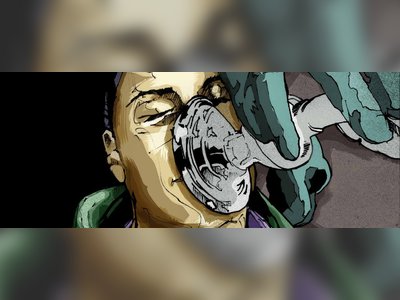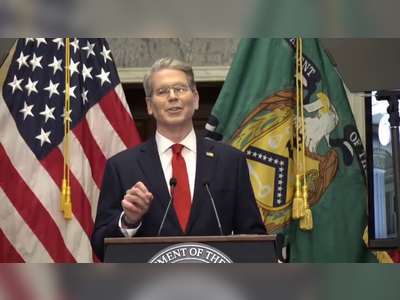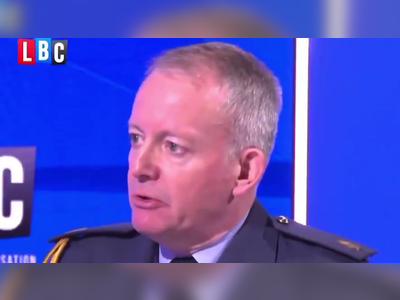Inside Warwick Hospital: A Glimpse into the NHS's Battle Against Winter Pressures
As the NHS confronts a severe flu season, hospitals like Warwick are operating under critical incidents to manage overwhelming patient loads.
This winter, the UK's National Health Service (NHS) is facing one of its toughest challenges yet as a severe flu season collides with the healthcare system's perennial pressures.
Warwick Hospital, part of the South Warwickshire NHS Foundation Trust, recently opened its doors to the BBC, offering a rare glimpse inside the emergency department during a declared critical incident.
The scene inside the hospital is emblematic of a crisis reverberating across the NHS.
Dr Raj Paw, a senior consultant in the emergency department at Warwick, was observed in a constant state of triage, determining whether a patient in his nineties, stable but still recuperating, could be moved to free up a much-needed bed.
Conversations like these are a daily occurrence in UK hospitals, many of which are renowned for their quality of care, yet are finding themselves pushed to the breaking point.
During the BBC's visit, Warwick Hospital dealt with demand soaring to nearly 100 patients above its 375-bed capacity, prompting the first-ever critical incident declaration in its history.
Such declarations enable hospitals to take extraordinary measures, like redeploying staff and creating makeshift ward spaces, in an attempt to manage the patient influx.
The BBC's coverage proved eye-opening.
Dr Paw and his colleagues were seen adapting makeshift solutions, treating patients like Percy, an elderly gentleman in liver failure, who found himself waiting hours in an ambulance before being brought inside.
This season's flu epidemic has left emergency departments overrun, leading to patients being treated in any available space—even chairs.
Throughout this challenging period, medical staff maintained an unwavering dedication to patient care, despite daunting conditions.
'You can’t take your eye off them for a second or another patient will be in it,' one nurse remarked humorously when explaining the shortage of wheelchairs.
Doctors, like Dr Arun Jeyakumar, prioritized patients based on urgency, sometimes conducting consultations directly in ambulances.
Others, like Dr Paw, grappled with decisions on moving stabilized patients to accommodate new emergencies—like the heart attack patient who had to be moved to free up a cubicle.
This reflection of the healthcare pressures was visually represented in the hospital’s bank of screens.
During the BBC’s visit, data displayed nearly 30-hour waits for a bed, with several ambulances queued outside, one topping a four-hour wait.
Despite briefly declaring a critical incident to address this pressure, staff at Warwick Hospital, like those across the NHS, have continued their tireless work under intense conditions.
By the end of their visit, the BBC reported a lifted critical incident, though the ongoing pressures remained undeniable.
As British hospitals like Warwick grapple with a grueling winter season, the resilience of their staff stands out—struggling to balance the inflow of increasingly sick patients with the soaring demand for available resources, a narrative playing out in emergency departments country-wide.
Warwick Hospital, part of the South Warwickshire NHS Foundation Trust, recently opened its doors to the BBC, offering a rare glimpse inside the emergency department during a declared critical incident.
The scene inside the hospital is emblematic of a crisis reverberating across the NHS.
Dr Raj Paw, a senior consultant in the emergency department at Warwick, was observed in a constant state of triage, determining whether a patient in his nineties, stable but still recuperating, could be moved to free up a much-needed bed.
Conversations like these are a daily occurrence in UK hospitals, many of which are renowned for their quality of care, yet are finding themselves pushed to the breaking point.
During the BBC's visit, Warwick Hospital dealt with demand soaring to nearly 100 patients above its 375-bed capacity, prompting the first-ever critical incident declaration in its history.
Such declarations enable hospitals to take extraordinary measures, like redeploying staff and creating makeshift ward spaces, in an attempt to manage the patient influx.
The BBC's coverage proved eye-opening.
Dr Paw and his colleagues were seen adapting makeshift solutions, treating patients like Percy, an elderly gentleman in liver failure, who found himself waiting hours in an ambulance before being brought inside.
This season's flu epidemic has left emergency departments overrun, leading to patients being treated in any available space—even chairs.
Throughout this challenging period, medical staff maintained an unwavering dedication to patient care, despite daunting conditions.
'You can’t take your eye off them for a second or another patient will be in it,' one nurse remarked humorously when explaining the shortage of wheelchairs.
Doctors, like Dr Arun Jeyakumar, prioritized patients based on urgency, sometimes conducting consultations directly in ambulances.
Others, like Dr Paw, grappled with decisions on moving stabilized patients to accommodate new emergencies—like the heart attack patient who had to be moved to free up a cubicle.
This reflection of the healthcare pressures was visually represented in the hospital’s bank of screens.
During the BBC’s visit, data displayed nearly 30-hour waits for a bed, with several ambulances queued outside, one topping a four-hour wait.
Despite briefly declaring a critical incident to address this pressure, staff at Warwick Hospital, like those across the NHS, have continued their tireless work under intense conditions.
By the end of their visit, the BBC reported a lifted critical incident, though the ongoing pressures remained undeniable.
As British hospitals like Warwick grapple with a grueling winter season, the resilience of their staff stands out—struggling to balance the inflow of increasingly sick patients with the soaring demand for available resources, a narrative playing out in emergency departments country-wide.











